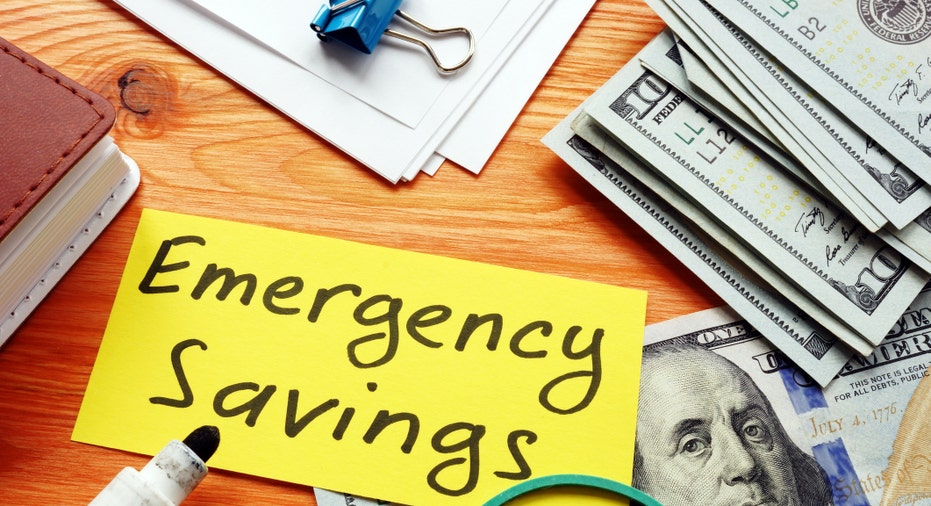
An emergency fund should be part of everyone’s financial plan. Learn how to build an emergency fund and save for life’s unexpected events. (iStock)
If the coronavirus pandemic has taught us anything, it’s the importance of preparing for the unexpected. Having an emergency fund ensures that you have a financial cushion in times of need — like a job loss, car repair, or medical expense — without having to rely on credit cards or other high-interest loans.
Nearly 25% of Americans have no emergency savings and 16% have taken on more debt since the start of the pandemic. However, by regularly setting aside extra money — even a small amount — you’ll be able to recover more quickly should unexpected expenses or events happen.
Read on for steps you can take to start building your emergency fund. Then head over to Credible to learn how you can reach your financial goals faster with a high-yield savings account.
How do I build an emergency fund?
There are several strategies you can use to quickly start building your emergency fund. A few include:
- Open a high-yield savings account
- Set up automatic savings
- Create a budget
- Save your tax refund
- Assess and adjust
1. Open a high-yield savings account
A high-yield savings account generally pays 20 to 25 times the national average — which is 0.04% according to FDIC — of a standard savings account. This allows your money to grow much more quickly, leading to significant savings. The higher the annual percentage yield (APY) for that account, the faster you'll increase your savings.
These rates are variable and can change over time in accordance with the Federal Reserve making adjustments to interest rates. However, no matter the APY of a high-yield savings account, it will outearn a traditional savings account.
No matter how much cash you may have to deposit, you can save extra money with high-yield savings options from Credible.
5 WAYS A HIGH-YIELD SAVINGS ACCOUNT WILL BOOST YOUR OVERALL SAVINGS
2. Set up automatic savings
Set a monthly savings goal and automatically set that money aside every month. If your employer offers direct deposit, you can divide your paycheck and automatically deposit your emergency fund monthly savings into a separate account. This will get you into the habit of saving without giving it a second thought.
If you want to learn how these baby steps can lead to a significant rainy day fund, head over to Credible to check out high-yield savings plan options.
HOW TO CHOOSE A HIGH-YIELD SAVINGS ACCOUNT
3. Create a budget
When you know what’s coming in and what’s going out, you can cut expenses where possible and put that extra money toward your emergency fund. The average U.S. household spends almost $400 per month on basic utilities and, according to the U.S. Department of Agriculture, the average annual food-at-home prices were 3.5% higher in 2020 than in 2019 — 75% above average.
WHAT IS THE 50/30/20 BUDGET RULE?
4. Save your tax refund
If you’re expecting a tax refund, you can give your emergency fund a big boost once a year. When you’re filing your taxes, you can even have your refund directly deposited into your emergency fund savings account. On the other hand, you can adjust your W-4 tax form so that you have less money withheld from your paychecks to put toward your emergency fund.
5 STRATEGIES TO BOOST YOUR SAVINGS WITH LOW INTEREST RATES
5. Assess and adjust
Make sure you periodically assess what’s in your emergency fund savings account and adjust when necessary. If you’ve recently withdrawn cash from your emergency fund, try directing more money into your account. Have you reached your financial goal? Consider investing those additional funds.
Don’t leave money on the table. You can increase your savings with high-yield savings accounts on the Credible marketplace.
4 REASONS TO OPEN A HIGH-YIELD SAVINGS ACCOUNT RIGHT NOW
How much money should you have in an emergency fund?
A good rule of thumb is to have between three and six months’ worth of living expenses saved in your emergency fund. Living expenses are what you need to pay each month. This can be your monthly mortgage or rent payment, utilities, phone bill, internet costs, insurance, transportation, food, and other debt payments.
The amount you save also depends on the stability of your income and whether anyone in your household has a chronic medical condition.
In a two-income household, a three-month emergency fund should be fine. If your household only has one income, you’re self-employed, you earn a straight commission, or if someone has a chronic illness, then six months’ worth of living expenses in your emergency fund is more ideal.
If you do decide to open a high-yield savings account, be aware that some accounts may require a minimum balance or a minimum opening deposit and some may have withdrawal fees. Interest rates are also variable, so while a bank may advertise a high APY when you apply, it typically doesn’t last.
If you’re interested in quick and easy ways to save money, visit Credible to find a high-yield savings option that best fits your financial goals.
5 SAVINGS ACCOUNT TERMS YOU SHOULD KNOW
Have a finance-related question, but don't know who to ask? Email The Credible Money Expert at moneyexpert@credible.com and your question might be answered by Credible in our Money Expert column.
"how" - Google News
April 22, 2021 at 01:31AM
https://ift.tt/3auCiXO
How do I build an emergency fund? - Fox Business
"how" - Google News
https://ift.tt/2MfXd3I
https://ift.tt/3d8uZUG
Bagikan Berita Ini














0 Response to "How do I build an emergency fund? - Fox Business"
Post a Comment